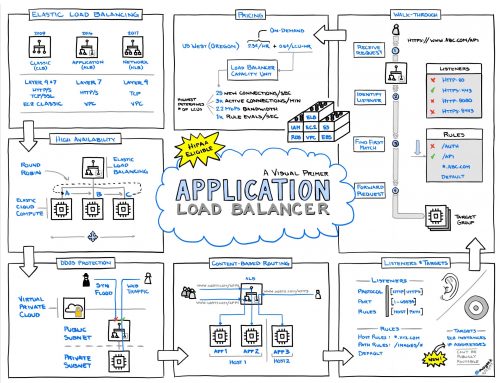I found this visual primer to the Application Load Balancing on the Amazon AWS quite interesting. Application Load Balancing is not something I am using just yet, but it’s getting there. With more and more services and pricing schemas available from Amazon, explaining things simply is not as easy as it may seem.
Tag: web development
oEmbed specification
oEmbed has been around for a while and there are some really nice implementations of it. For example, in WordPress, where pasting a URL to YouTube video, Flickr photo, Twitter tweet, and a number of other services, will result in a nicely formatted embedded snippet from an external site. WordPress does not only consume the oEmbed, but also provides embeddable content.
For a while now, I’ve been thinking about ways to utilize it. There are quite a few applications of oEmbed that make sense for our projects at work. For now, I’ll just leave you here with the link to the oEmbed specification.
Optimizing web servers for high throughput and low latency
Dropbox Tech Blog has this in-depth article on “Optimizing web servers for high throughput and low latency“. It goes over everything from hardware and low level operating system stuff all the way up to the application level.
Great job, guys!
BeEF – Browser Exploitation Framework
BeEF is a browser exploitation framework.
BeEF is short for The Browser Exploitation Framework. It is a penetration testing tool that focuses on the web browser.
Amid growing concerns about web-borne attacks against clients, including mobile clients, BeEF allows the professional penetration tester to assess the actual security posture of a target environment by using client-side attack vectors. Unlike other security frameworks, BeEF looks past the hardened network perimeter and client system, and examines exploitability within the context of the one open door: the web browser. BeEF will hook one or more web browsers and use them as beachheads for launching directed command modules and further attacks against the system from within the browser context.
On React and WordPress
I have a great deal of respect for Automattic in general and Matt Mullenweg in particular. They have done an amazing job with WordPress, which is now used by more than a quarter of all websites. But they are also a great example of how companies can work in the Open Source software space.
It’s not all just business. Automattic raises the ethics bar quite high. And today there is an excellent example of how they do it. Check out this blog post by Matt on why WordPress will be moving away from the React JavaScript framework developed by Facebook:
I think Facebook’s clause is actually clearer than many other approaches companies could take, and Facebook has been one of the better open source contributors out there. But we have a lot of problems to tackle, and convincing the world that Facebook’s patent clause is fine isn’t ours to take on. It’s their fight.
Respect!


